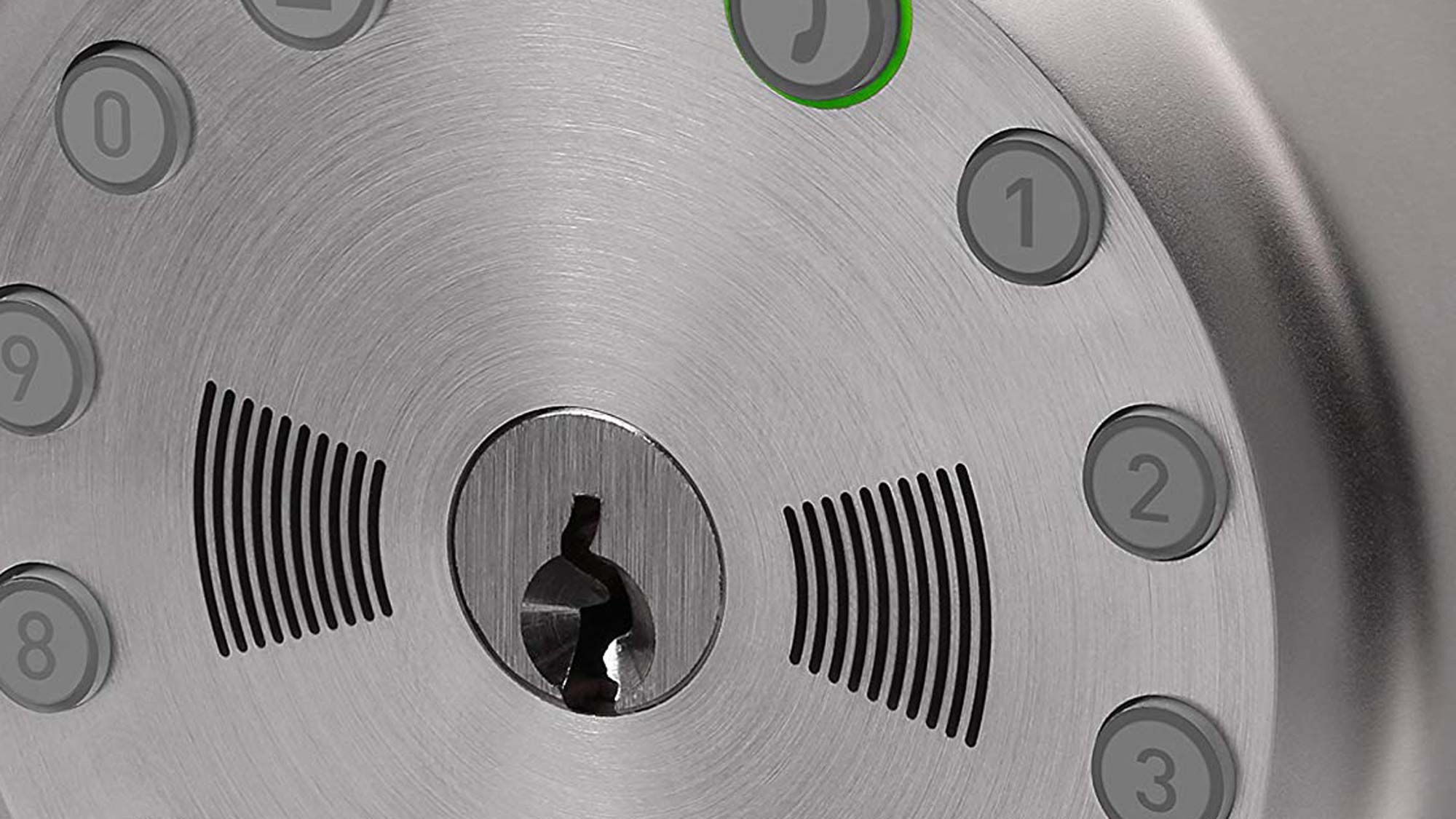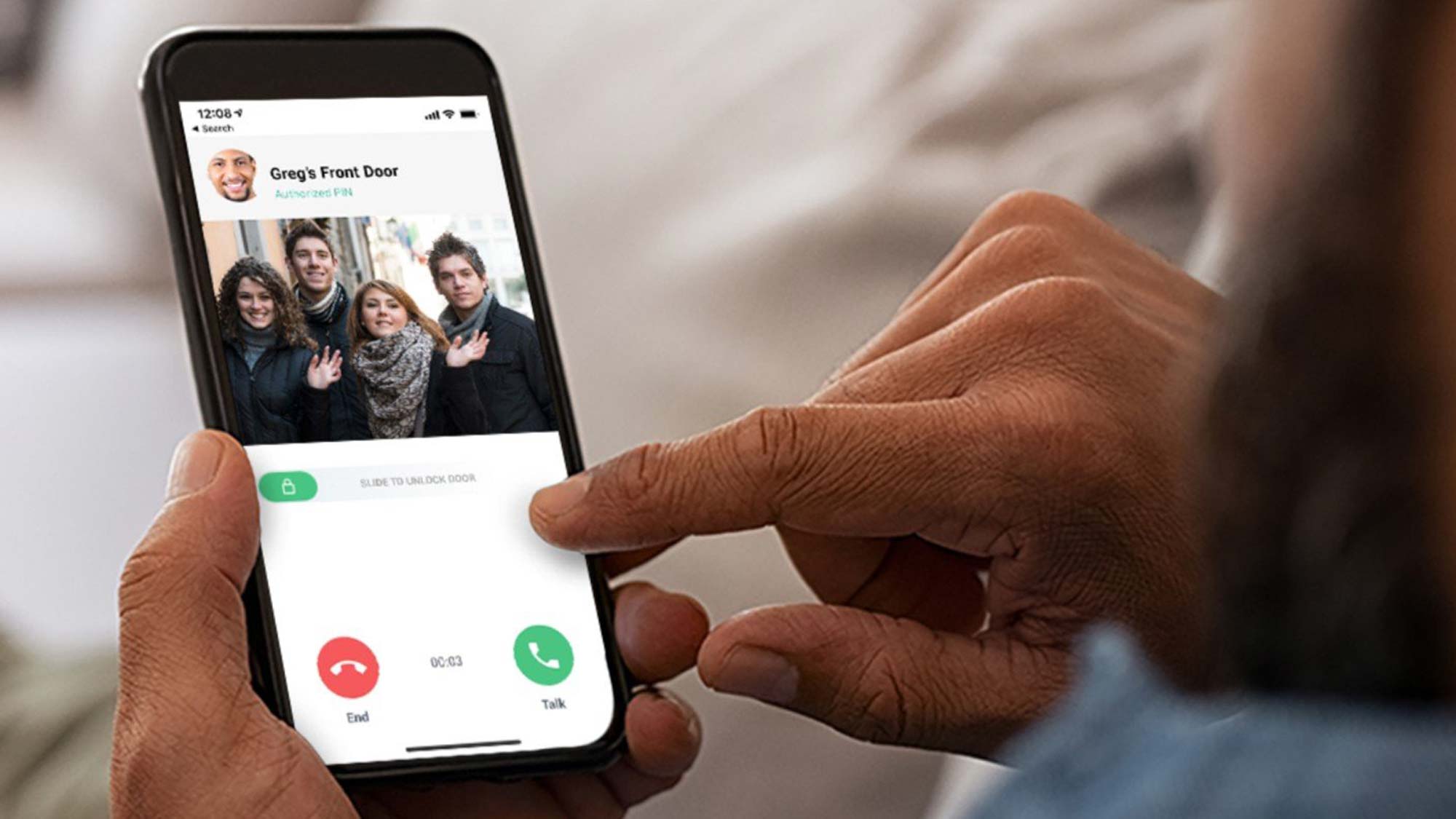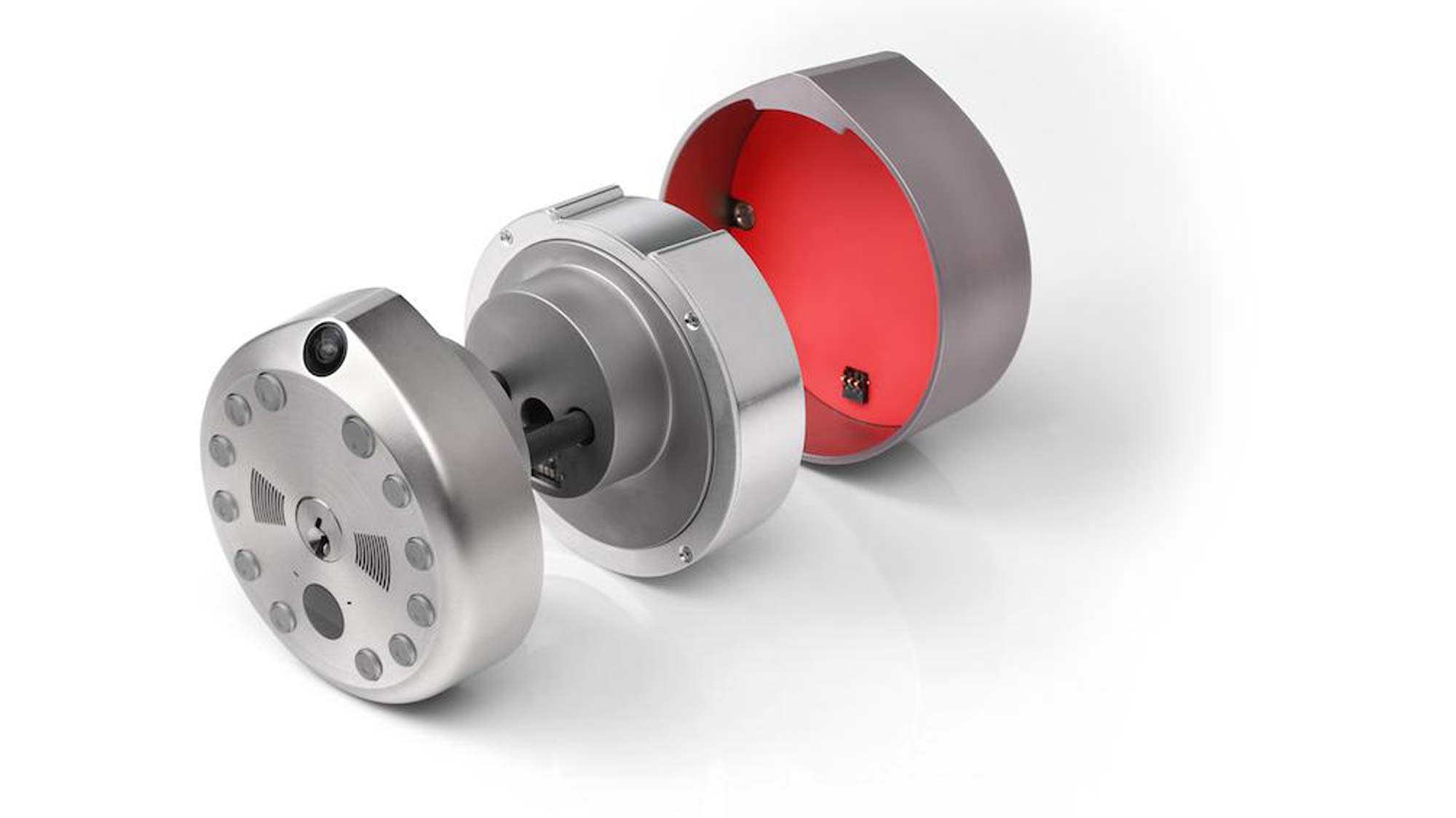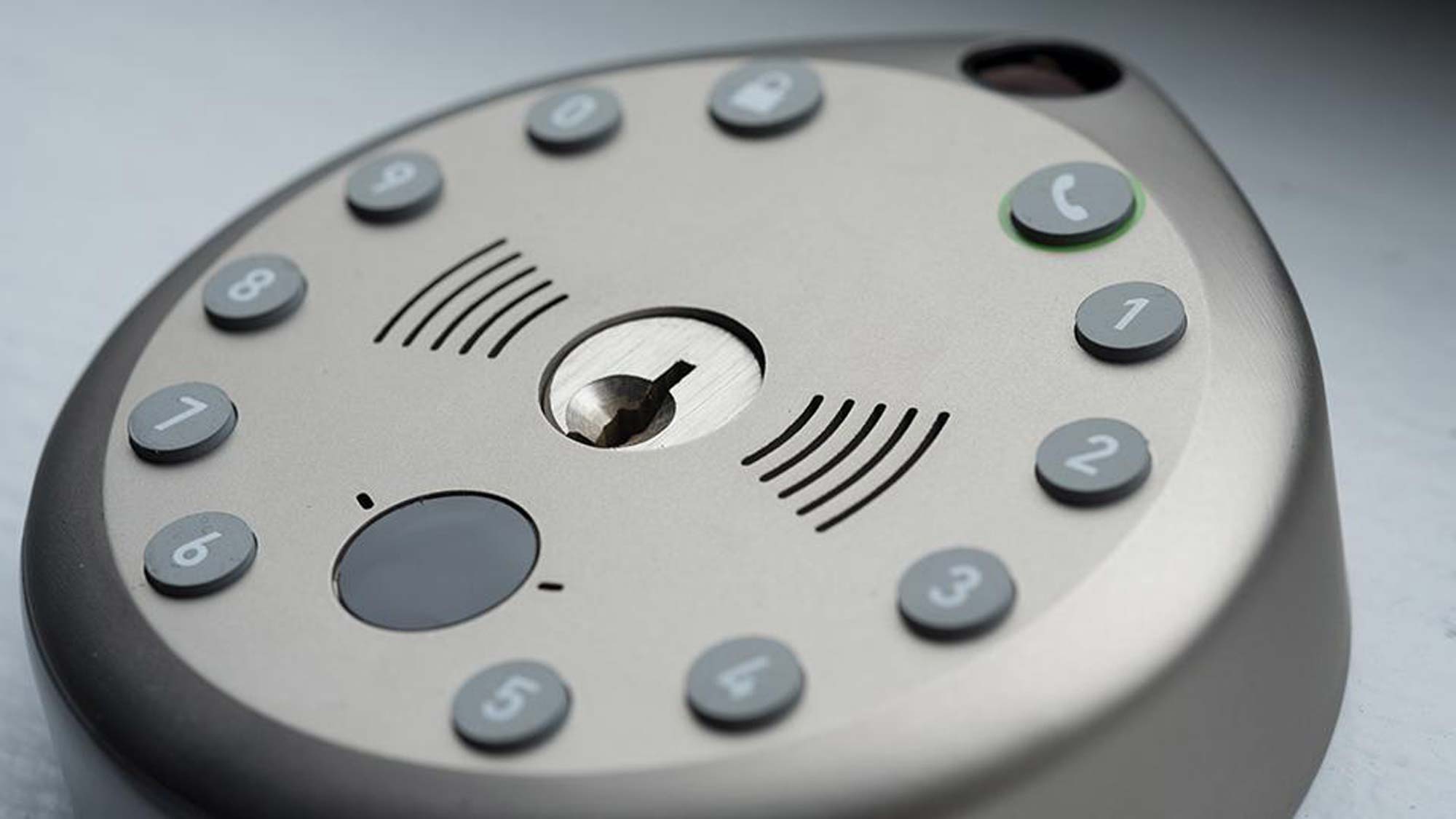Tom's Guide Verdict
Skip the Gate smart lock and get a dedicated smart lock and video doorbell.
Pros
- +
Combines smart lock and video doorbell in one
- +
Easy-to-use software
Cons
- -
Expensive with service plan
- -
No smart-home integration
- -
Usability issues
Why you can trust Tom's Guide
Think about all the things that you have on your front door. There's the doorbell, the lock and perhaps a camera to keep an eye on things. Why not roll all of those into one? That's the idea behind the Gate smart lock, a combination device that works as both a smart lock and a video doorbell. It includes a standard keyed lock, a combination lock, a security camera and a two-way video doorbell. With the accompanying app, you can see who is outside, talk to them, and lock or unlock the door remotely. But this $249 device isn't worth more than the sum of its parts.
Design: Stylish, with issues
The Gate smart lock is a very nice-looking device, with a smooth, curved, teardrop-shaped design. It installs into the same space as a standard deadbolt, with the camera and number pad enclosure on the front of the lock and battery and other electronics on the back. The battery is built in to the large, tear-shaped latch on the back of the lock; you pull the whole latch cover off to remove it, and the device can be recharged with a micro USB cable. Gate claims that the battery will last from 30 to 60 days, depending on how much it is used. We couldn't do a full battery test, but signs point to the battery life being at the lower end of that range, especially if you enable the motion-detection feature.

The front of the lock is where the action happens. At the top is the camera, with the circular keypad below it. The keys light up when any of the buttons are pressed, while the call button blinks.
Right in the middle of the front panel is the manual lock, with small speakers around it that you can use to talk to the person at the door. These are adequately loud; I could hear a visitor's voice over moderate traffic noise. The speakers also, rather annoyingly, produce a slight staticky hissing sound when the lock is in active mode, a giveaway that the lock is active and that you might be watching. If you are trying to avoid someone at the door, this could be an issue.
There are a few rough edges to the Gate smart lock. For one, it isn't always obvious to visitors that they must push the green button (with the small telephone icon on it) to ring the bell. One person tried repeatedly pushing the black button in the middle of the lock, which is where the infrared emitters for the camera sit. The number buttons and the call button do blink when the camera detects motion, but that doesn't happen if you disable motion detection. Simply put, the phone icon isn't intuitive.
MORE: Best Smart Lock 2019
Another feature that is missing is a conventional doorbell. Both the Ring and Nest video doorbells include the option for a bell that rings when someone is at the door, but that's not available on the Gate. So, if you're at home, but don't have your phone with you, there's a chance you could miss a visitor.
Get instant access to breaking news, the hottest reviews, great deals and helpful tips.
Video Doorbell: Not ideal
If you have a storm door, a second door that sits over your front door to protect it from bad weather, it can obscure the Gate's camera and interfere with the motion-detection feature. That's not a problem with video doorbells that sit on the door frame, outside the storm door. The motion-detection feature is also less sophisticated than those on other video doorbells. You can't set zones that will trigger the motion, which meant that the cars driving by my house on a busy street triggered the motion detector on all sensitivity levels. I ended up disabling this feature as it just wasn't usable.

While the camera has a low resolution of 640 x 352 pixels, video quality from the doorbell was decent in both daylight and night vision, with enough detail that I could recognize faces nearby and at a distance. We did find, however, that the video tended to start out overexposed as the camera started up, then dim down to a more reasonable level. The night vision also had a tendency to overexpose faces close to the camera, although, to be fair, most cameras that use infrared LEDs to illuminate the subject do the same.
Service Plans
The Gate smart lock requires a service plan. The basic free plan allows you to use the video streaming over the internet and to remotely control the lock, and it gives you four PINs for access. You can't, however, save or share videos captured by the lock.
There are two levels of paid service plan: Premiere and Premiere Plus. The Premiere plan costs $4.99 a month (or $49.99 a year) and offers five days of video storage and sharing, allows for 10 PIN users, and provides support for scheduled PINs, which work at only certain times or on certain dates. The Premiere Plus ($7.99 a month, $79.99 a year) ups the video storage and sharing to 30 days and offers an unlimited number of PINs.
MORE: Amazon Cloud Cam vs. Nest vs. Ring vs. Netgear
Compared to video-doorbell plans, Gate's is on the pricier side. Ring's basic plan, for instance, costs $30 per year but gives you 60 days of rolling cloud storage. And all of the other smart locks we've tested offer far more PINs, without requiring a subscription.
Installation: Simple and straightforward
Most locks have you do the physical installation first, but with the Gate smart lock, you set up the software and connect the lock to your Wi-Fi network first. That's a fairly simple process of connecting the battery on the back of the lock, then using the Gate app (available for iOS and Android) to connect the lock to your Wi-Fi network. Once that is done, you can remove the battery again and install the lock in the door.

The Gate smart lock is compatible with wooden doors that are 1 3/4 inches to 1 1/2 inches thick with a single deadbolt mechanism. Basically, if it has a single key on the outside and a single latch on the inside, it should work, but the online setup guide has the specific details. The lock comes installed on a door block, a piece of plastic that simulates a standard door. That's a smart move, as removing the lock from the door block is a good way to see how it fits together before you take your front door lock apart, and I wish other smart lock manufacturers would do this. The Gate also comes with a deadbolt mechanism that can be adjusted for different offsets of the hole that the lock fits into.
We had no problems installing the lock into an external door; it fitted cleanly into the hole left by the old lock and didn't require any alteration. That may not be the case in some older doors in which the hole that the lock fits through is not evenly cut, as part of the front of the lock fits inside the hole itself. But with a clean, round hole in the door, it was simply a question of installing the deadbolt mechanism, then putting the two sides of the lock together and tightening the two screws that hold it together.
App: Limited features
The Gate app is pretty simple and straightforward to use; when someone rings the bell, it pops up an alert on your phone. Tap this, and the app shows you video from the camera and allows you to hear and talk to the visitor. If you want to let them in, you touch and drag the slider, and the lock disengages.
One curious omission is that you can't trigger video from the camera in the app; it shows video only if motion is detected or if someone pushes the button. I sometimes use my video doorbell to check the weather or look for Amazon parcels on my doorstep, but you can't do that with the Gate smart lock.
MORE: Best Smart Home Devices 2019
The app also allows you to set up PIN users. The basic service plan includes four users, each of which is assigned a PIN that will open the door. The premiere service plan allows you to add an unlimited number of users and set schedules for any code, so you can give a contractor a code that works on only certain days or give the kids a code that will let them in only if they get home before curfew. That'll teach them to get home late.
Currently, the Gate smart lock does not integrate with any smart home systems, but support for Amazon Alexa has been announced.
Conclusion: Interesting but not compelling
The usability, design and cost issues that we discussed above give us pause about recommending the Gate smart lock. The hardware is well designed and looks great, but some users got a bit confused trying to figure out which buttons to press. The motion detection isn't as good as that on the Ring or the Nest, and the higher overall cost makes the Gate a less attractive package. The lack of support for working with smart home systems also means that the app is the only way to control this device. While the Gate smart lock does quite effectively combine two or three devices into one, it does so with downsides that make the product hard to use.
Richard Baguley has been working as a technology writer and journalist since 1993. As well as contributing to Tom's Guide, he writes for Cnet, T3, Wired and many other publications.

